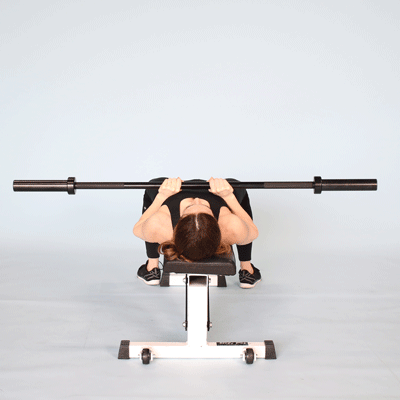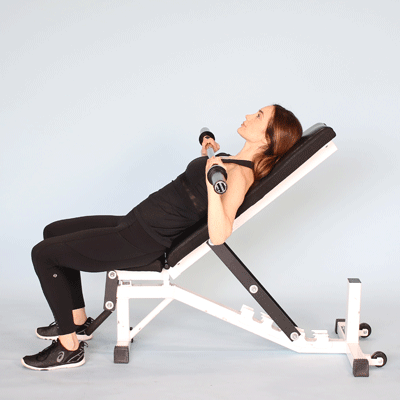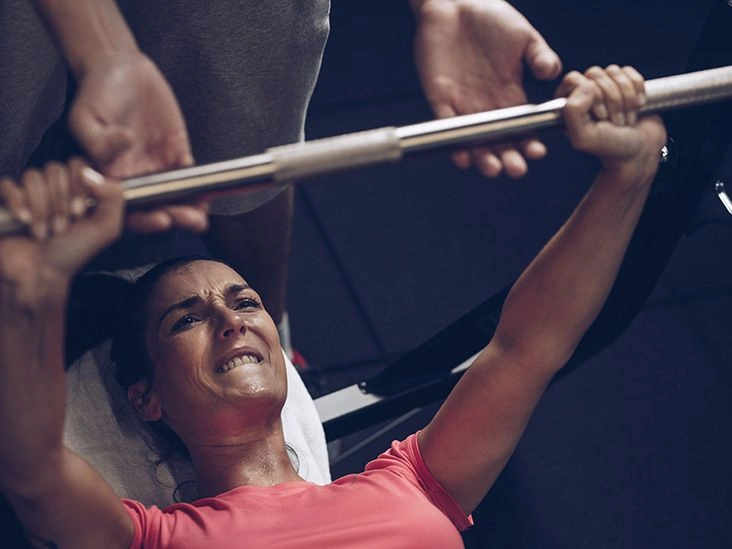Bench presses are a powerful movement for developing the chest, arms, and shoulder musculature. They engage multiple upper-body muscles, including the pectorals, deltoids, and arm muscles.
A bench press is a resistance exercise used to strengthen the upper torso—primarily the pectoralis muscles, triceps, and shoulders.
Depending on your objectives, different bench press variations emphasize slightly different muscle groups. For instance, a closer grip on the bar places more demand on the triceps and the forearms.
Other advantages of incorporating bench presses into your strength program include greater upper-body strength, enhanced muscular stamina, and even better preparation for movements like push-ups. They’re also useful for strengthening athletes in sports such as sprinting, hockey, and football.
Muscles engaged during a bench press
Bench presses recruit several different upper-body muscles, most notably the chest, shoulder, and arm muscles.
While muscle emphasis shifts slightly with each variation, bench presses commonly target the following muscles:
- pectoralis major
- anterior deltoid
- triceps brachii
- biceps brachii
- serratus anterior
Continue reading to learn more about bench presses and tips to maximize this exercise.
What is a bench press?
The bench press is a compound lift that primarily targets the upper-body musculature.
It consists of lying on a bench and pressing weight upward with a barbell or dumbbells. In a bench press, you lower the load to chest level and then press it back up by extending the arms—each full cycle is a repetition, or rep.
There are several bench press variations that shift emphasis between muscle groups. These can include flat, incline, decline positions, or adjusting hand placement on the bar.
How do bench press variations influence muscle activation?
Different bench press setups emphasize different muscles. Variations include:
- Traditional bench press. Performed lying on a flat bench pressing a barbell vertically at chest level. It works the pectorals, shoulders, and arms.
- Incline bench press. The bench is set between 45 and 60 degrees so you recline slightly. This version targets the upper chest and anterior shoulder muscles.
- Decline bench press. The bench is angled downward so your feet are higher than your head. It emphasizes the lower chest and the shoulders.
- Narrow-grip bench press. Hands are placed closer together on the bar, increasing work for the triceps and forearms.
You don’t need to include every variation in a single session. Overworking a muscle group raises the risk of injury, especially with heavy loads.
If you enjoy changing things up, choose two or more variations across workouts. Allow 1–2 rest days between intense bench-focused sessions so muscles can recover before training them again.
How to perform a bench press
Traditional flat bench press
Equipment needed: barbell (with plates as needed) or dumbbells, flat bench
- Lie on your back on a flat bench. Grasp a barbell with hands slightly outside shoulder width. The bar should be aligned over the shoulders.
- Plant your feet firmly on the floor and keep your hips in contact with the bench throughout the movement.
- Engage your core and maintain a neutral spine. Avoid excessive arching of the lower back.
- Carefully unrack the bar or lift the dumbbells. Lower the weight to chest level—approximately at nipple height—allowing the elbows to flare to about 45 degrees from the torso.
- Stop lowering when your elbows are just below the bench line. Drive your feet into the floor as you press the bar back to the start position.
- Complete 5–10 reps depending on the load, up to 3 sets.
Narrow grip bench press

Equipment needed: barbell (plates optional), flat bench
Follow the steps for the traditional bench press, but hold the bar with a shoulder-width grip throughout the movement.
Incline bench press

Equipment needed: two dumbbells or a barbell, incline bench set between 45 and 60 degrees
- Place your feet flat on the floor and lean back so your back rests against the bench with a neutral spine.
- Begin with the dumbbells or barbell directly above the shoulders. Palms face forward and thumbs wrap around the handles.
- Press the weight up above the eyes or slightly higher, with elbows about 45 degrees from the body.
- Inhale and lower the weight with control until it reaches just above the chest, keeping elbows and wrists out to the sides.
- Repeat the press for around 5 or more reps depending on your chosen load and goals. Heavier weights generally mean fewer reps; lighter weights allow more repetitions.
Decline chest press

Equipment needed: decline bench and dumbbells or barbell
- Carefully lie back on the decline bench so your legs are higher than your head, pressing your back firmly into the bench. Place feet in the provided foot supports.
- With a spotter if available, lift the bar off the rack or hold the dumbbells. Position the weight directly above the shoulders with the arms slightly wider than shoulder width.
- Press until the arms reach roughly a 45-degree angle at the top.
- Lower the weight slowly back down to chest height with elbows flared to the sides.
- Repeat for about 5 or more reps, adjusting repetitions based on weight and goals—heavier loads typically mean fewer repetitions.
Adding bench presses to your training plan
If you plan to include bench presses in your strength routine, aim to perform them about 2–3 times per week. Leave at least one day between bench sessions so muscle groups can recover.
How many reps you do in a session should align with your objectives. Very heavy loads may call for only 3–5 reps per set. You can do up to 3 sets, taking a few minutes of rest between sets. Set count also varies by goal: a lifter focused on maximal strength might do 4–6 sets, whereas someone prioritizing muscular endurance may do 2–3 sets.
For balanced conditioning, dedicate separate sessions to legs and shoulders—practice squats, lunges, and overhead presses—and include aerobic activities like running, swimming, or cycling in your weekly plan.
This kind of varied approach ensures comprehensive training of the entire body and provides rest days so different muscle groups can recover.
Full-body routines are often more effective than isolating a single movement repeatedly. Because the body adapts quickly, it’s important to rotate exercises to keep making progress.
Frequently asked questions
What is a bench press good for?
Bench presses help increase strength, boost endurance, and shape upper-body muscles, notably the chest, arms, and shoulders.
In addition, some research suggests including exercises such as bench presses in your program can provide other health benefits, like improved bone density.
What is the difference between a press and a bench press?
The word “press” broadly describes any exercise that uses a pushing motion to develop strength and muscle. Examples include leg press, chest press, floor press, and the overhead press.
The overhead press, for instance, is typically performed seated or standing and involves pressing a barbell or dumbbells from the upper chest to overhead.
The bench press specifically targets upper-body muscles by pressing weight upward from chest level while lying on a bench.
Although both are pressing movements for the upper body, they emphasize different muscles. For example, some studies show the overhead press activates the deltoids more, whereas the bench press places greater load on the chest.
How many days per week should I do bench press?
Research indicates training a movement 1–3 times weekly can help optimize strength improvements.
However, the ideal frequency depends on your goals and overall training plan.
Some people prefer doing bench presses once weekly; others find benefit in training them 3–4 times per week.
For optimal recovery, perform bench press sessions on nonconsecutive days so muscles have time to rebuild.
How much should you bench press?
Appropriate bench press weight varies by fitness level, body size, lifting background, and goals.
Use strength standards or charts to estimate suitable loads, then modify weights to match your objectives.
If targeting muscular endurance, choose lighter weights and higher reps. If aiming for strength, use heavier loads for fewer reps.
Takeaway
Bench presses are an effective way to develop the chest, arms, and shoulders. If you’re new to the movement, work with a spotter who can monitor your technique and ensure you’re using an appropriate load.
If you need help integrating bench presses into a safe, effective program, consult a certified personal trainer who can tailor a plan to your goals.


















Leave a Reply
You must be logged in to post a comment.